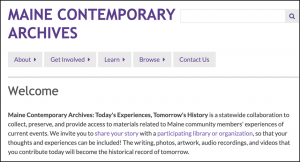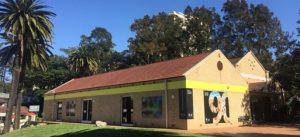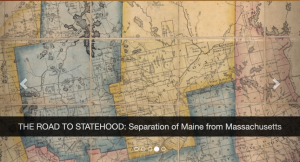by Jenna Gillies
Salem Massachusetts is famous for its witch trials, so it should not be a surprise that one of Peabody Essex Museum’s (PEM) exhibitions focuses on this time period. The exhibition cannot be missed; it is the first …

Featuring profiles of outreach & advocacy in cultural heritage
by Jenna Gillies
Salem Massachusetts is famous for its witch trials, so it should not be a surprise that one of Peabody Essex Museum’s (PEM) exhibitions focuses on this time period. The exhibition cannot be missed; it is the first …
by Lisa Jenkins

In this “time of COVID,” libraries and archives have reached out to their communities to both provide support and help chronicle the lives of everyday people, collecting oral histories, videos, poetry, art, and more. The Maine …
by Meredith Combs
Everyone knows some version of the quote that says those who do not learn history are destined to repeat it. The Leo Baeck Institute’s 1938 Projekt: Posts from the Past was created with that idea in mind: …
by Martha Ball
As you watch the “Collection Connection” video for the Ralston Crawford Collection of Jazz Photography archival photos flash while you hear the opening notes of “Main Stem” by U.S. Army Blues. Curator Melissa Weber shares that through …
![]()
by Beth Armstrong

What does a regional art gallery and museum do when Covid-19 derails its long-planned 90th anniversary programming? That is what happened to the Manly Art Gallery & Museum (MAG&M), a small but significant museum located …
by Amanda Miano
“Paul and Hedy Strnad are trapped as the Nazis close in. Can Hedy’s dress designs and their cousin in Milwaukee help them get to the United States? All efforts failed. Hedy and Paul perished in the Holocaust, …
by Gretta Cox Gorton
While school field trips normally consist of a chaotic litany of permission slips, long bus rides, and a brown bag lunch, fifth graders in Worcester’s public schools are having a revolutionary kind of learning experience.
Instead …
by Rebecca Johnston
Many United States citizens have become more interested in politics in the last year, spurred on by such events as the 2020 Presidential election and January 2021’s attempted capital insurrection. Because of these new conversations around civic …

by Rose Dionne
Online may not be the word that springs to mind when one thinks of the State of Maine, but maybe it should be. Maine Memory Network is an online archival resource sharing network created by Maine Historical …
by Toben Traver
What happens when we engage students in the process of historic documentation and research? This is the question that drives the annual Vermont History Day (VHD) program and competition. Since 1983, VHD, administered by the …